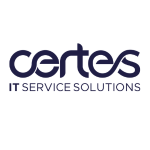In an era defined by rapid technological advancements, evolving citizen expectations, and complex socio-economic challenges, the public sector is under increasing pressure to deliver efficient, responsive, and citizen-centric services. In this context, traditional bureaucratic approaches often struggle to keep up with the pace of change. This has led many governmental organisations to turn towards Agile methodology—a flexible and iterative approach initially popularised in the software development industry—as a means to enhance their operations and better serve their constituents.

Agile Essentials: A Brief Overview
Agile methodology represents a departure from traditional linear project management approaches by emphasising flexibility, collaboration, and continuous improvement. Rooted in the Agile Manifesto, this methodology prioritizes four core values:
- Individuals and interactions over processes and tools
- Working solutions over comprehensive documentation
- Customer collaboration over contract negotiation
- Responding to change over following a plan
Agile methodology consists of several frameworks, including Scrum, Kanban, and Lean, each with its own principles and practices. The key commonality is a focus on incremental progress, regular feedback loops, and adaptability in the face of changing requirements.
Benefits of Agile in the Public Sector
- Enhanced Citizen-Centric Services: Agile allows public sector organisations to quickly adapt to changing citizen needs and preferences. Regular feedback from citizens and stakeholders ensures that services are designed and modified with their best interests in mind.
- Flexibility in Planning: Traditional bureaucratic approaches often struggle with rigid planning, but Agile embraces change. This is particularly important in the public sector, where policies, regulations, and priorities can shift rapidly.
- Improved Collaboration: Agile encourages cross-functional teams to collaborate closely, breaking down silos that can hinder information flow. This fosters a culture of open communication and teamwork, improving problem-solving and decision-making.
- Efficient Resource Allocation: Agile promotes prioritisation based on value and urgency. This ensures that limited resources are directed towards the most critical tasks, resulting in efficient use of budgets and personnel.
- Faster Delivery of Services: By breaking projects into smaller, manageable increments, Agile allows for quicker delivery of tangible outcomes. This is especially valuable in situations where timely service delivery is crucial.
- Transparency and Accountability: Agile practices such as daily stand-up meetings and visual management boards create transparency in project progress. This also enhances accountability among team members.
- Risk Mitigation: Agile's iterative approach helps identify and address risks early in the project lifecycle. Regular reviews and adjustments allow for timely mitigation, reducing the chances of project failure.
Challenges and Considerations
Implementing Agile methodology in the public sector isn't without its challenges:
- Cultural Shift: Government organisations often have deeply ingrained hierarchical cultures that resist change. Transitioning to Agile requires a cultural shift towards empowerment, collaboration, and risk-taking.
- Regulatory and Compliance Constraints: Public sector projects often involve regulatory and compliance requirements that must be met. Balancing these constraints with Agile's flexible nature can be challenging.
- Stakeholder Engagement: Involving a wide array of stakeholders, each with distinct needs and interests, can complicate Agile implementation. Ensuring consistent engagement and communication is crucial.
- Skill and Knowledge Gap: Agile requires a certain level of expertise and training. Public sector employees may need to upskill to fully grasp Agile principles and practices.
- Change Resistance: Change is met with resistance in any sector, and the public sector is no exception. Stakeholders might resist Agile due to fear of the unknown or concerns about its feasibility.
Successful Case Studies
UK Government Digital Service (GDS): GDS embraced Agile to transform how the UK government delivers public services online. They introduced the "Government as a Platform" concept, breaking down services into reusable components that could be developed iteratively.
Webinar & Podcast
View all previous webinars and podcasts on the Certes website: https://certes.co.uk/the-knowledgehub/webinars/
Conclusion
Agile methodology offers a transformative approach to governance in the public sector. By embracing flexibility, collaboration, and a citizen-centric mindset, government organisations can overcome the challenges of an ever-changing landscape. While the journey towards Agile implementation may be complex, the potential benefits in terms of efficient service delivery, improved stakeholder engagement, and adaptability to change are well worth the effort. As the public sector continues to evolve, Agile stands as a beacon of innovation, promising a more responsive and effective government for citizens around the world.
Find out more and meet Certes IT Service Solutions at DigiGov Expo - 24th - 25th September 2024 at the ExCeL, London. Find out more about them here and secure your free place here.

Certes IT Solutions
Certes Ltd. is a specialist provider of IT professionals & capability for IT project delivery. Established for almost 40 years', they help organisations access the best IT specialists in the market. From their roots as an IT development company, Certes Ltd. will help you plan and deliver the right IT Service Solution for your organisation and/or projects. This is executed through a choice of resource solutions that best serve your organisational need, which are continually evolving as digital transformation projects gather momentum.


-Apr-25-2024-09-43-35-5584-AM.png?width=80&height=80&name=Untitled%20design%20(77)-Apr-25-2024-09-43-35-5584-AM.png)
